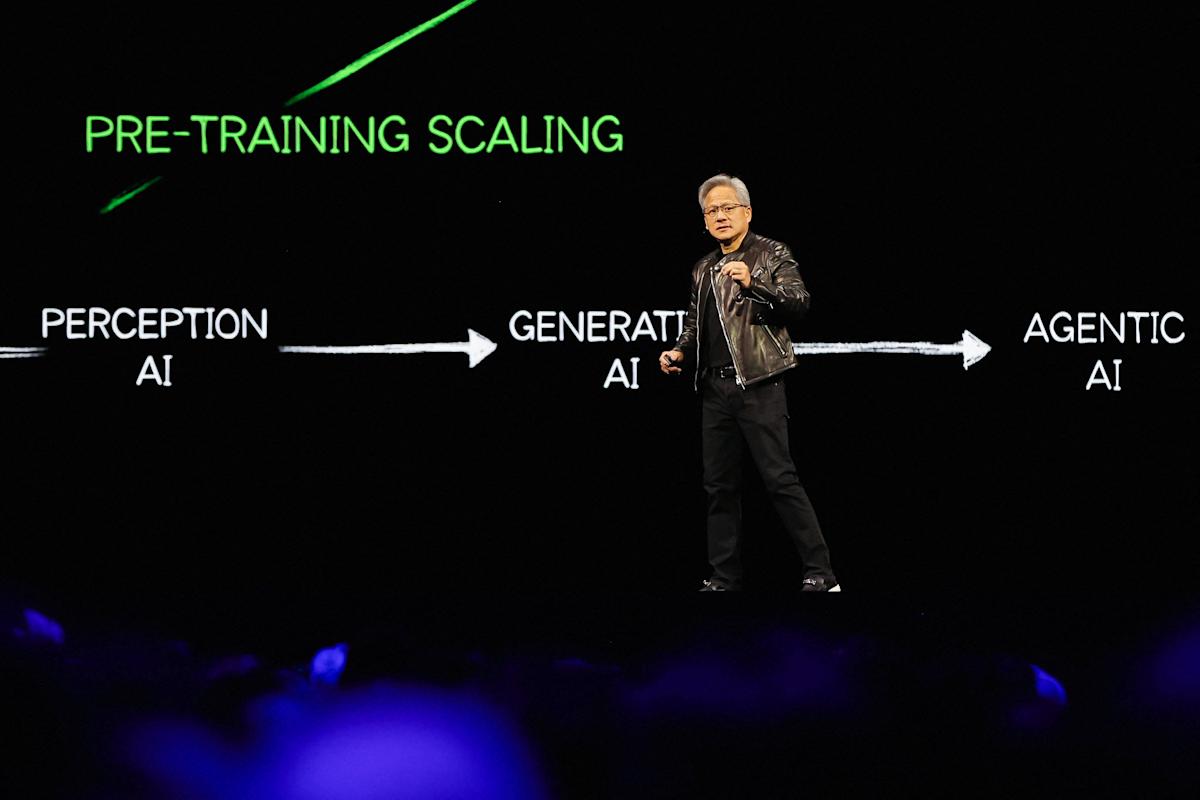Nvidia Stock Rebounds as GTC Boosts Wall Street Confidence in Long-Term AI Demand

Nvidia’s Stock Performance After GTC Event
Recent Stock Movements
On Wednesday morning, Nvidia (NVDA) shares experienced a modest increase of over 1%, recovering some of the losses sustained during a two-day decline that saw the stock drop by approximately 5%. This downturn followed an annual event, the GPU Technology Conference (GTC), which failed to impress investors amid a broader market decline.
Reactions from Analysts
Following CEO Jensen Huang’s much-anticipated keynote at the GTC, several Wall Street analysts emerged with a positive outlook on Nvidia’s future. Investors were reassured by the company’s strategic roadmap and the growing demand for artificial intelligence (AI) technologies.
- Citi Analyst Comments: Atif Malik from Citi maintained a "Buy" rating on Nvidia stock and set a price target of $163, calling the company "king of the hill" in the AI chip market.
- Raymond James Perspective: Analyst Srini Pajjuri also affirmed a "Strong Buy" rating, expressing confidence in the long-term demand for AI and appreciating Nvidia’s innovation and roadmap.
- Bernstein’s Assessment: Stacy Rasgon noted that Nvidia’s competitive edge is widening across their product offerings, further solidifying their market position.
Upcoming Product Launches
During his GTC presentation in San Jose, Huang outlined upcoming AI chips that Nvidia plans to launch in the coming years. Highlights include:
- Blackwell Ultra: Set to debut in the second half of 2025.
- Vera Rubin: Scheduled for release in the second half of 2026.
- Vera Rubin Ultra: Anticipated for the second half of 2027.
Huang expressed optimism about the data center market, predicting that spending on compute hardware could reach $1 trillion in the near future.
Growth in AI Demand
Analysts were particularly convinced that innovations in AI models would create an ongoing need for Nvidia’s GPUs. Huang emphasized that newer models, such as DeepSeek from China, could actually lead to increased demand for computing power rather than diminishing it.
- JPMorgan’s Insights: Analyst Harlan Sur pointed out that advancements in AI models will drive the need for higher computing capabilities, validating Huang’s optimism.
Mixed Perspectives
Despite the overall positive sentiment, not all analysts were entirely optimistic. Some raised concerns about specific aspects of Nvidia’s strategy:
- Jefferies Critique: Analyst Blayne Curtis noted a lack of comparative analysis between Nvidia’s GPUs, competitors, and alternative technologies like ASICs (Application-Specific Integrated Circuits). He commented that while Vera Rubin may be an incremental upgrade in 2026, the Rubin Ultra is expected to represent a more significant advancement in 2027.
Market Context
Nvidia’s recent stock volatility is set against the backdrop of a broader market downturn. While concerns about long-term AI demand and potential competition persist, the analysts’ optimistic outlook on Nvidia’s strategy and roadmap reflects a belief in the company’s market leadership, particularly in the rapidly evolving AI and computing sectors.
Investors looking at Nvidia’s trajectory should weigh these insights from analysts, considering both the opportunities for growth and the challenges posed by market competitors and changing technologies.






